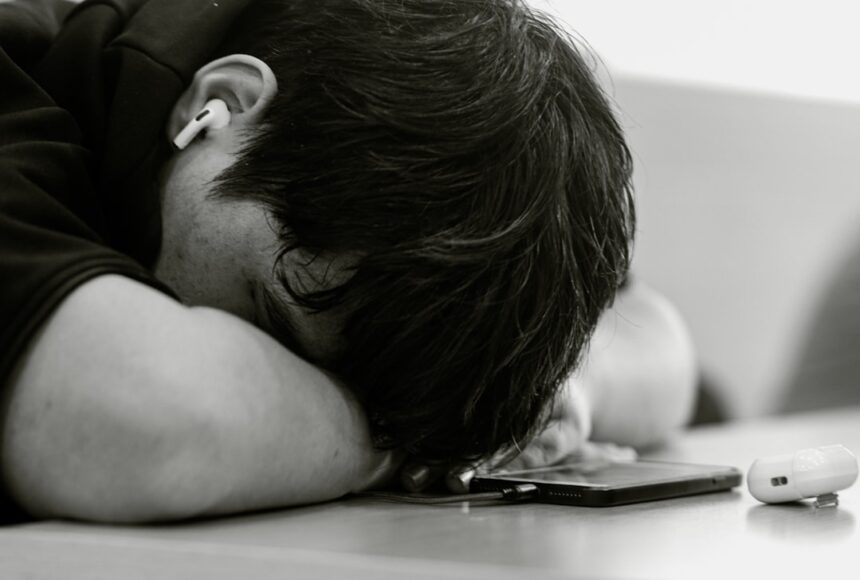In today’s fast-paced world, you may find yourself constantly bombarded by digital stimuli. From the moment you wake up to the sound of your smartphone alarm to the last scroll through social media before bed, technology is woven into the fabric of your daily life. This relentless exposure can lead to a phenomenon known as digital fatigue, a state of mental and physical exhaustion caused by excessive screen time and information overload.
You might notice symptoms such as irritability, difficulty concentrating, and a general sense of overwhelm. Recognizing these signs is the first step toward reclaiming your mental clarity and emotional well-being. Digital fatigue can manifest in various ways, affecting not only your productivity but also your relationships and overall quality of life.
You may find that your attention span has dwindled, making it challenging to engage in deep work or meaningful conversations. The constant notifications and updates can create a sense of urgency that leaves you feeling perpetually on edge. Understanding the roots of this fatigue is crucial; it often stems from the pressure to stay connected and informed in an increasingly digital world.
By acknowledging the impact of technology on your mental state, you can begin to take proactive steps to mitigate its effects.
Key Takeaways
- Digital fatigue is the feeling of being overwhelmed and exhausted by constant digital stimulation.
- Setting boundaries with technology can help reduce digital fatigue and improve overall well-being.
- Practicing mindfulness and meditation can help manage stress and improve mental clarity.
- Taking regular breaks from screens can reduce eye strain and mental fatigue.
- Engaging in physical activity can help counteract the sedentary nature of digital work and improve overall health.
Setting Boundaries with Technology
To combat digital fatigue, it is essential to establish clear boundaries with technology. You might start by designating specific times during the day when you will check your devices, rather than allowing them to dictate your schedule. For instance, consider implementing a “tech-free” hour in the morning or evening, where you can focus on activities that nourish your mind and spirit without the interference of screens.
This simple practice can help you regain control over your time and reduce the feeling of being constantly tethered to your devices. In addition to setting time limits, you can also create physical boundaries for technology use. Designate certain areas in your home as tech-free zones, such as the dining room or bedroom.
By doing so, you encourage yourself to engage in more meaningful interactions with family and friends during meals or foster a more restful environment conducive to sleep. These boundaries not only help reduce screen time but also promote healthier habits and relationships, allowing you to reconnect with the world around you.
Practicing Mindfulness and Meditation

Incorporating mindfulness and meditation into your daily routine can be a powerful antidote to digital fatigue. You may find that taking just a few minutes each day to practice mindfulness helps ground you in the present moment, reducing anxiety and enhancing your overall well-being. Mindfulness encourages you to observe your thoughts and feelings without judgment, allowing you to cultivate a greater awareness of how technology affects your mental state.
By becoming more attuned to your emotions, you can better recognize when it’s time to step away from screens. Meditation offers a structured way to practice mindfulness, providing you with tools to manage stress and improve focus. You might explore various meditation techniques, such as guided meditations or breathwork exercises, which can help you develop a deeper sense of calm amidst the chaos of digital life.
As you commit to regular meditation practice, you’ll likely notice an increase in your ability to concentrate and a decrease in feelings of overwhelm. This newfound clarity can empower you to make more intentional choices about how you engage with technology.
Taking Regular Breaks from Screens
| Benefits of Taking Regular Breaks from Screens | Statistics |
|---|---|
| Reduced Eye Strain | 80% of people who take regular breaks experience reduced eye strain |
| Improved Productivity | 67% of individuals report increased productivity after taking regular breaks |
| Decreased Risk of Health Issues | 50% lower risk of developing health issues related to excessive screen time |
| Enhanced Mental Well-being | 90% of people feel more mentally refreshed after taking regular breaks |
One effective strategy for combating digital fatigue is to take regular breaks from screens throughout your day. You may find that implementing the “20-20-20” rule—taking a 20-second break every 20 minutes to look at something 20 feet away—can significantly reduce eye strain and mental fatigue. These brief pauses allow your mind to reset and recharge, making it easier for you to return to tasks with renewed focus and energy.
In addition to short breaks, consider scheduling longer periods away from screens during your day. Whether it’s stepping outside for fresh air or engaging in a hobby that doesn’t involve technology, these breaks can provide much-needed relief from the constant barrage of information. By intentionally carving out time for screen-free activities, you’ll not only alleviate digital fatigue but also rediscover the joy of being present in the moment.
Engaging in Physical Activity
Physical activity is another vital component in combating digital fatigue. When you engage in regular exercise, you release endorphins that boost your mood and energy levels, counteracting the lethargy that often accompanies excessive screen time. You might find that even a short walk or a quick workout can invigorate both your body and mind, helping you feel more balanced and less overwhelmed by digital distractions.
Incorporating movement into your daily routine doesn’t have to be daunting; it can be as simple as taking the stairs instead of the elevator or stretching during breaks from work. You may also consider joining a local sports team or fitness class, which not only promotes physical health but also fosters social connections that can further enrich your life. By prioritizing physical activity, you’ll create a positive feedback loop that enhances both your mental clarity and emotional resilience.
Creating a Relaxing Environment

Your environment plays a significant role in how you feel and function throughout the day. To combat digital fatigue, consider creating a relaxing space that promotes tranquility and focus. You might start by decluttering your surroundings, as a tidy environment can help clear your mind and reduce distractions.
Incorporating elements such as plants, soft lighting, or calming colors can further enhance the atmosphere, making it easier for you to unwind after a long day spent in front of screens. Additionally, consider incorporating sensory elements that promote relaxation into your environment. This could include playing soothing music, using essential oils for aromatherapy, or even setting up a cozy reading nook where you can escape into a book without the interference of technology.
By intentionally designing your space to foster relaxation and focus, you’ll create an oasis that allows you to recharge and reconnect with yourself away from digital distractions.
Establishing a Digital Detox Routine
Establishing a digital detox routine can be an effective way to combat digital fatigue and regain control over your relationship with technology. You might start by designating specific days or weekends each month as “digital detox days,” where you consciously unplug from all devices. During this time, engage in activities that nourish your mind and spirit—such as reading, cooking, or spending quality time with loved ones—without the interference of screens.
As you embark on this detox journey, consider documenting your experiences in a journal. Reflecting on how it feels to disconnect from technology can provide valuable insights into your habits and preferences. You may discover new hobbies or interests that bring you joy outside of the digital realm.
By committing to regular digital detoxes, you’ll cultivate a healthier relationship with technology while fostering deeper connections with yourself and those around you.
Prioritizing Sleep and Rest
Sleep is an essential component of overall well-being, yet many people struggle with getting adequate rest due to excessive screen time.
To prioritize sleep and combat digital fatigue, consider implementing a “screen curfew” by turning off all devices at least an hour before bedtime.
You might incorporate activities such as reading a physical book, practicing gentle stretches, or engaging in relaxation techniques like deep breathing or meditation before bed. By prioritizing sleep and establishing healthy nighttime habits, you’ll improve not only your rest but also your overall mental clarity and emotional resilience during the day.
Balancing Work and Personal Time
In an increasingly connected world, finding balance between work and personal time can be challenging. You may find yourself checking emails or responding to messages outside of work hours, leading to feelings of burnout and digital fatigue. To create a healthier work-life balance, set clear boundaries around when you’re available for work-related tasks and when you’re off-duty.
Consider implementing strategies such as time-blocking or creating a dedicated workspace within your home that separates work from personal life. By designating specific hours for work tasks and committing to unplugging during personal time, you’ll foster a greater sense of balance in your life. This intentional separation allows you to fully engage in personal activities without the distraction of work-related concerns.
Connecting with Nature
Spending time in nature is one of the most effective ways to combat digital fatigue and rejuvenate your spirit. Nature has a unique ability to ground us and provide perspective amidst the chaos of modern life. You might find that even short walks in a nearby park or spending time in your garden can significantly improve your mood and mental clarity.
Consider making it a habit to connect with nature regularly—whether it’s hiking on weekends or simply enjoying a picnic outdoors after work. Engaging with the natural world allows you to unplug from technology while fostering mindfulness and appreciation for the beauty around you. As you immerse yourself in nature’s tranquility, you’ll likely find that feelings of stress and overwhelm begin to dissipate.
Seeking Professional Help if Needed
If you’ve tried various strategies for managing digital fatigue but still feel overwhelmed or unable to cope, it may be beneficial to seek professional help. A mental health professional can provide valuable insights into your experiences and offer tailored strategies for managing stress related to technology use. Therapy can serve as a safe space for you to explore underlying issues contributing to digital fatigue while equipping you with tools for healthier coping mechanisms.
Remember that seeking help is not a sign of weakness; rather, it demonstrates strength and self-awareness in recognizing when additional support is needed. By prioritizing your mental health and well-being, you’ll be better equipped to navigate the challenges posed by technology while fostering a more balanced relationship with the digital world around you. In conclusion, navigating the complexities of modern life requires intentionality when it comes to managing technology use.
By understanding digital fatigue and implementing strategies such as setting boundaries, practicing mindfulness, engaging in physical activity, creating relaxing environments, establishing detox routines, prioritizing sleep, balancing work-life dynamics, connecting with nature, and seeking professional help if needed, you can reclaim control over your well-being amidst an increasingly digital landscape. Embrace these practices as tools for cultivating resilience and fostering deeper connections with yourself and those around you.
In today’s fast-paced digital world, many individuals are experiencing digital fatigue, a state of mental exhaustion caused by excessive use of digital devices. To combat this, it’s essential to incorporate regular breaks, practice mindfulness, and set boundaries for screen time. An insightful article that delves into strategies for overcoming digital fatigue can be found on Unplugged Psych’s website. For more detailed guidance, you can read the full article by visiting




